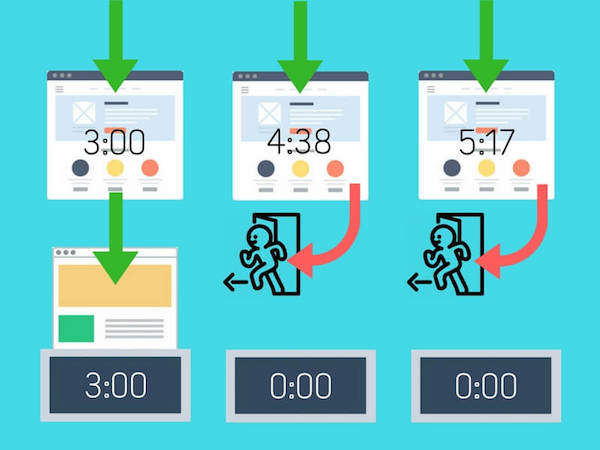Are you tied up with average time on page as your go-to metric for evaluating the effectiveness of your content?
In this episode of the popular Here’s Why digital marketing video series, Perficient Digital’s Mark Traphagen explains why average time on page doesn’t work for single-page views, and reveals a better metric to use.
Don’t miss a single episode of Here’s Why. Click the subscribe button below to be notified via email each time a new video is published.
Resources
- Measuring social traffic effectiveness when conversion is not the goal
- See all of our Here’s Why Videos | Subscribe to our YouTube Channel
Transcript
Eric: Mark, many companies these days invest a lot in content for their sites. How can they be sure that the content is effective, that it’s worth what they’re investing in?
Mark: If you have content that’s meant to drive people toward a conversion, such as a sale or sign up or a download, then you should have goal tracking set up in your analytics, so you can attribute to conversion to a person having viewed a particular piece of content.
Eric: Okay. But a direct conversion isn’t always the goal of content pages, right?
Mark: No, it’s not. I mean, content can have a lot of other uses. For example, we publish a lot of authoritative data studies, and we’re also in a business where it takes a lot of touches for someone to become a customer. Now it’s rare for someone to read one piece of our content and then immediately get in touch about doing business with us. So much of our content, such as our studies or even these videos, is meant to build brand awareness and to reinforce our reputation with potential customers.
Eric: If that’s the goal of the content and not a direct conversion, how can you know if a piece of content is doing its job?
Mark: There are a number of ways. I mean, you could track general brand lift online. How many people are talking about your brand and how positive is that talk? And if your content is effective, you should be seeing more branded searches for you, too.
Eric: But those don’t tell you anything about the effectiveness of a particular piece of content.
Mark: Right you are. And that’s why you’ve got to look at other things for that.
Eric: Like what?
Mark: For me if a content page’s main purpose is to build our brand’s authority and reputation, then the most important goal I can have is for people to actually read the content.
[Tweet “If brand-building is your #contentmarketing goal, then whether or not content is read is critical.”]
Eric: So does that mean you look at time on page, stats, and analytics?
Mark: That would seem like the most obvious metric. But time on page can deceive you, especially if you’re evaluating how much a single page is actually read.
Eric: How so?
Mark: Many people don’t realize that Google Analytics only records time on page if someone goes from that page to another page on your site. So if someone lands on one of your pages, reads it for any amount of time, and then leaves without going to another page, they get recorded as a session, but with zero time on page. Now, since average time on page, the metric that analytics displays, is calculated by total time recorded divided by the number of sessions, all those zero-time visits cause an artificially low average time for any individual page.

Eric: What’s the better way, then, to figure out if people are actually reading your content pages?
Mark: As it turns out there are third-party solutions you can code or plug into your site that will give you an actual time on page for all visitors. But my favorite plugin for this for WordPress is WP Scroll Depth.
Eric: Scroll Depth?
Mark: Yes. Just as it sounds, Scroll Depth is a measurement of how far down a page a visitor actually got. Now obviously, the further down the page a visitor scrolls the greater the chance that she read more of your content and, therefore, it had a chance to do the job you wanted it to do.
Eric: How can we measure Scroll Depth then?
Mark: It isn’t built into Google Analytics. But there are third-party plugins such as WP Scroll Depth that create a Google Analytics event trigger when a reader reaches a certain point on the page. Now you can see those events in your analytics. In my post on Marketing Land, I show how to use one of those plugins and how to extract the Scroll Depth metrics for any of your pages.
Don’t miss a single episode of Here’s Why. Click the subscribe button below to be notified via email each time a new video is published.
See all of our Here’s Why Videos | Subscribe to our YouTube Channel

just to add, now it is more easy with Scroll Depth Trigger which can be implemented if you are using Google Tag Manager.
A very detailed post around that by Simo: https://www.simoahava.com/analytics/scroll-depth-trigger-google-tag-manager/
This is why I love your blog, guys. Because I learn these teeny tiny things that make a big difference!
I did know about the average time on page thing, but I didn’t know that there was a way to measure it correctly. Will surely check out that plug-in.
Thanks so much, and keep up the great work! 😉